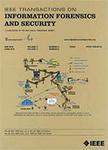版权所有:内蒙古大学图书馆 技术提供:维普资讯• 智图
内蒙古自治区呼和浩特市赛罕区大学西街235号 邮编: 010021

作者机构:Shanghai Univ Key Lab Specialty Fiber Opt & Opt Access Networks Shanghai Inst Adv Commun & Data Sci Shanghai 200444 Peoples R China Univ Technol Sydney Sch Elect & Data Engn Sydney NSW 2007 Australia King Fahd Univ Petr & Minerals KFUPM Dept Elect Engn Dhahran 31261 Saudi Arabia Princeton Univ Dept Elect & Comp Engn Princeton NJ 08544 USA
出 版 物:《IEEE TRANSACTIONS ON INFORMATION FORENSICS AND SECURITY》 (IEEE Trans. Inf. Forensics Secur.)
年 卷 期:2021年第16卷
页 面:3228-3240页
核心收录:
学科分类:0808[工学-电气工程] 08[工学] 0812[工学-计算机科学与技术(可授工学、理学学位)]
基 金:National Natural Science Foundation of China (NSFC) Australian Research Council [DP190102501] U.S. National Science Foundation [CCF-1908308]
主 题:Probability Power system reliability Optimization Wireless communication Optical transmitters Fading channels Communication system security Interference network physical layer security outage-aware beamforming nonconvex optimization path-following algorithms
摘 要:Under both long (infinite) and short (finite) blocklength transmissions, this paper considers physical layer security for a wireless interference network of multiple transmitter-user pairs, which is overheard by multiple eavesdroppers (EVs). The EVs are assumed to have better channel conditions than the legitimate users (UEs), making the conventional transmission unsecured. The paper develops a novel time-fraction based transmission, under which the information is transmitted to the UEs within a fraction of the time slot and artificial noise (AN) is transmitted within the remaining fraction to counter the strong EVs channels. Based on channel distribution information of UEs and EVs, the joint design of transmit beamforming, time fractions and AN power allocation to maximize the worst users secrecy rate is formulated in terms of nonconvex problems. Path-following algorithms of low complexity and rapid convergence are proposed for their solution. Simulations are provided to demonstrate the viability of the proposed methodology.